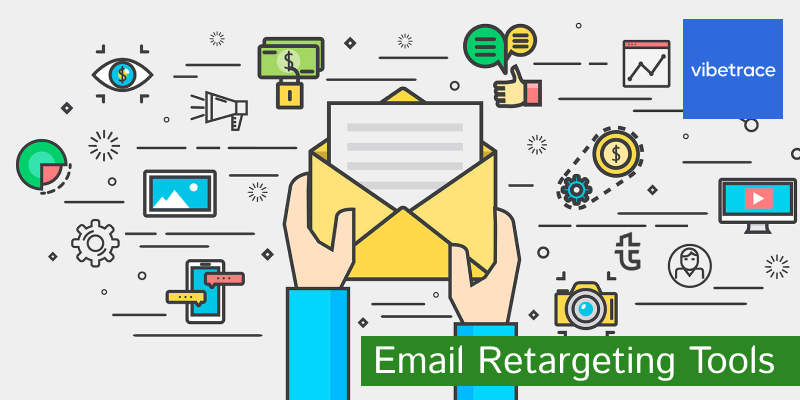How to win at email retargeting. Let’s see.
Today, most marketers know that email retargeting has evolved into a powerful tool for ecommerce businesses across the globe. But like any well-crafted tool, it takes knowledge and a deft hand to wield it properly.
Email remarketing is simple in concept, but many parts make up the whole. Like any marketing campaign, it’s important to start with a strong foundation.
In this guide, we’ll show you how you can win at email retargeting. We’ve made it easy for you to save valuable time and skip to whatever you’re interested in learning more about, too.
What is email retargeting?
Email retargeting, also known as email remarketing, is a digital marketing strategy whereby an ecommerce business uses email-based interactions to connect with customers. Retargeting emails can garner increased or new interest from website visitors and subscribers.
These types of emails will be highly tailored to specific consumer segments based on their demographics and behaviour on site. Ideally, several different email retargeting campaigns will be running simultaneously to meet the specific needs of as many identified consumer segments as possible.
How does email retargeting work?
Email retargeting begins like any type of email marketing. You might find it difficult to reach your target audience if you, you know, don’t have their email address. So, we suggest starting with that.
These can be collected via forms on your website or during the purchase process.
But for those who wish to level up their ecommerce marketing game, you can’t go wrong with implementing a Digital Assistant.
Digital Assistant can help to collect valuable contact information and to build your email list of subscribers. It will also help increase your conversion rate by improving the overall customer experience.
Once you have an email, you can track things like purchase history or cart abandonment. But to collect more information that will help you get more specific with retargeting, you need to track visitor behaviour.
This behavioural marketing can be done with cookies stored in the user’s browser. It can also be accomplished by the increasingly popular Facebook-like tracking pixel, which can be placed in display ads, emails, and browser-based websites.
Using the tracking method of choice, this data can be collected by your email service provider (ESP). When pre-set conditions have been met, the relevant retargeting email sequence will be triggered.
When done correctly, it’s at this point that businesses like yours can hope to recover a significant amount of lost potential revenue.
This can be as simple as a cart abandonment reminder that nudges a purchase to completion or a renewal email with a promo code for coming back as a service user.
How to implement email retargeting
The path to success for email remarketing is an easy one to follow in theory. But it takes a well thought out plan that considers the tiny details to make it work for your ecommerce business.
Collect customer data
Make use of forms on your landing pages, shopping carts, and your on-site technology like the Digital Assistant. This will make it easy for you to gather the all-important consumer contact information.
Gather info most relevant to building out your customer profile like:
- Name
- Geographic data
- Social media accounts
- Referral sources
- Relevant interests
- Job and salary information
As a form of behavioural marketing, email retargeting will also require you to track the actions your potential customers take. Browser cookies will allow you to track each visitor’s online behaviour and retargeting pixels will work on your website and in the emails you send.
Between these two methods, you’ll be able to collect loads of valuable data like pages and products viewed, click-through rates, and email open rates.
Segment your audience
The more data you collect the better. This also means that over time, as you gather more data, you’ll be able to gain better insights.
As you collect data, it’s time to analyse it for trends. This will help you segment your audience into specific and related groups. For example, someone who has made a purchase before will respond very differently to being sent an email with product recommendations to a fence-sitter.
Having well-defined retargeting segments will ensure higher CTRs and conversions from your remarketing campaign. There are no fast rules here, but the more specific you can be, the more likely the emails will be successful.
The limit is nearly your imagination, but it all starts with the data and nature of your ecommerce store.
Plan your retargeting campaign
Once you’ve done your due diligence with gathering data and segmenting your audience, it’s time to make a plan. You first need to identify who you’re aiming for with your retargeting campaign, mainly:
- Casual and first-time browsers of your site
- Inactive users
- Email subscribers who’ve never bought
- New customers
- Long-term and regular customers
- Next, how will you re-target your audience?
Emails – It’s in the name, so this one’s a given. You can have email sequences for new visitors or subscribers, or specific actions like cart abandonment. The key is to optimise the process for personalised emails.
Content – What you offer to the consumer needs to be good enough to re-engage them with your brand and your site.
Quality content that answers questions or resolves concerns can go a long way to nudging a consumer down the funnel. And the content sent needs to be relevant to each customer segment.
Ads – For some customers, tailored emails with quality content won’t be enough to convert. Consumers are up to 70% more likely to convert with retargeting of display ads. However, use the collected behavioural data to optimise retargeting with services like Google Ads and Facebook Ads.
By using a Digital Assistant and Connected Media, you’ll be able to boost your retargeting ads. Data collected from your email remarketing campaign won’t go to waste; it’ll help with planning and building more customer-centric experiences.
Email retargeting use cases
Now that you’ve seen how a winning email retargeting strategy works, let’s have a look at some common email examples.
Reduce abandoned shopping carts
Cart abandonment is the bane of ecommerce. The Baymard Institute’s cumulative research currently tallies online cart abandonment at a whopping 69.8%.
Customers will abandon a cart for a variety of reasons. But the customer journey doesn’t have to end because the visitor left with an incomplete cart.
Take the opportunity to retarget with content meant to address and resolve their biggest obstacles to hitting “buy now”.
Pop up ads can be an effective first line of defence, but they can also be intrusive. These days, internet users are increasingly using some form of popup ad blockers.
Abandoned cart emails, though, can be highly effective. A recent report found that more than 40% of these retargeting emails are opened with a 21% CTR.
Whisky Loot uses their cart abandonment email to inject some humour into the customer’s life. It starts with the great benefit of being able to “try new whiskies every month”, but quickly lightens the mood with suggestions of whisky baths and easter-egg whisky hunts:
By using humour, Whisky Loot is taking the pressure off the consumer. Besides adding a few laughs to the recipient’s inbox, the email sums everything up with a useful FAQ-like section.
This luxury retailer takes the time to explain the product and its benefits and other common questions. Perhaps best of all, there is a clear CTA button stating “Treat Yourself” that sums up the brand and what it stands for.
Reactivate old visitors
Email remarketing can give an ever so gentle—or moderate—nudge to subscribers and existing customers who have become inactive.
So how do you determine when a user is inactive? It depends on your product and your target audience. But a good general rule of thumb is any user who hasn’t interacted with your website or email campaign in the past one to three months.
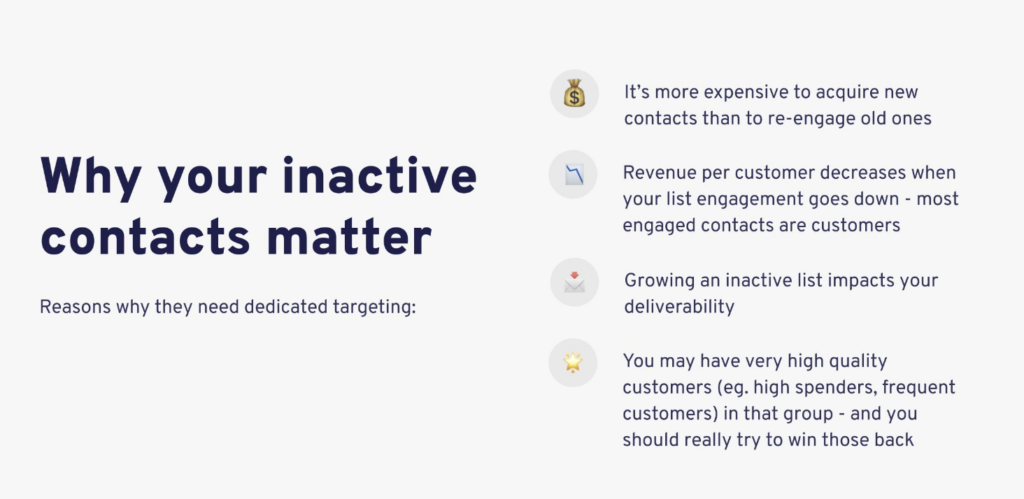
You’ll need to track user data with your email marketing software. Use analytics data to determine your cutoff point for defining “inactive.” Next, gather information such as open rate and CTR to determine who gets sent a reactivation email campaign.
Want to be up to date with Marketing?
Subscribe to our Retail CX newsletter!

Stay connected with what’s really important to optimize your digital revenues.
By clicking the button, you accept our Terms & Conditions. Also you will need to confirm your email address.
Make things easier on yourself by setting up automation to track this data and when the threshold has been reached, the first reactivation email will be triggered to send. But you can’t just send any old email.
Customers who’ve fallen off your radar will need some convincing to win them back. But don’t worry, reactivating old customers is much easier and cheaper than acquiring new ones. And you have several types of reactivation tactics:
- Offering a one-time discount or promo code
- Offering better customisation for more relevant products and services
- Offering to stop sending emails—this is your last chance to make the subscribers see what they will miss out on
You’ll need to test these tactics against the data and analyse what works best. Typically, you’ll use a combination of all three of these types of emails.
This reactivation email from Duolingo may hit too close to home for many who know the struggles of keeping a daily streak going while trying to learn a language. Duolingo keeps it short and sweet.
They appeal to emotion by depicting the mascot of the brand with a single tear. Then they put the onus on the user “Do you still want to learn a language?”
This email is a good example of a first and gentle nudge to reactivate. Perhaps if no progress is made, Duolingo could sweeten the deal later by offering a free month of the premium service?
Offer product recommendations, cross-sell or upsell
Email remarketing is always a good time for any ecommerce business to make product suggestions. By having your audience segmented, you’ll be able to gain insight into buying behaviour.
This will help to make sure you’re sending product emails out to the right people.

The all-conquering behemoth that is Amazon is the master of making product recommendations. They take every opportunity to do this on their apps and their website.
But they also take their big data and send targeted emails to their customers.
One way to make it easy to send product recommendations is as part of a customer loyalty or reward program. This retargeting email from ASOS takes the time to show the customer their current rewards.
It also states at the top just how close the customer is to levelling up their reward status.
It has relevant suggestions based on shopping and website behaviour and also makes it easy for the customer to maximise their rewards.
It’s also a good idea to use retargeting emails for cross- and upselling products and services. If a customer had previously been browsing a pizza oven on your website, send them a list of your bestsellers.
Make sure to include related and necessary items like fuel and pizza dough grade flour.
Stock availability update
Sometimes an ecommerce merchant loses out on a sale because the item that the shopper is looking for is not in stock.
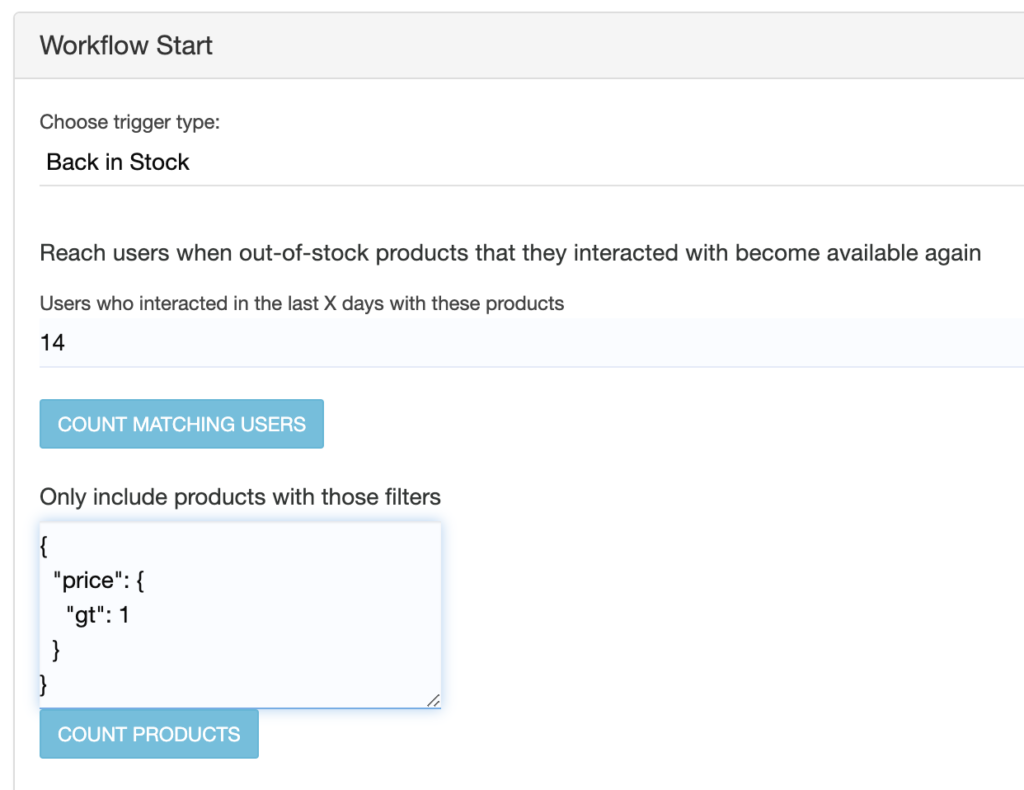
If you use a tool like the Digital Assistant, though, you should have collected this visitor’s email. When the item is back in stock, you can follow up and let them know.
Even if the shopper found the item somewhere else, your website and brand will have been brought back to mind.
Depending on the consumer’s future behaviour, you can use your email marketing tools to move them into a different segment like “visited but never purchased” or “inactive subscriber.”
Customer behaviour-based retargeting
While the prior use cases are all quite simple to record and implement, behavioural emails will take your retargeting to new heights.
While more complicated to use properly, these types of campaigns can be the most rewarding.
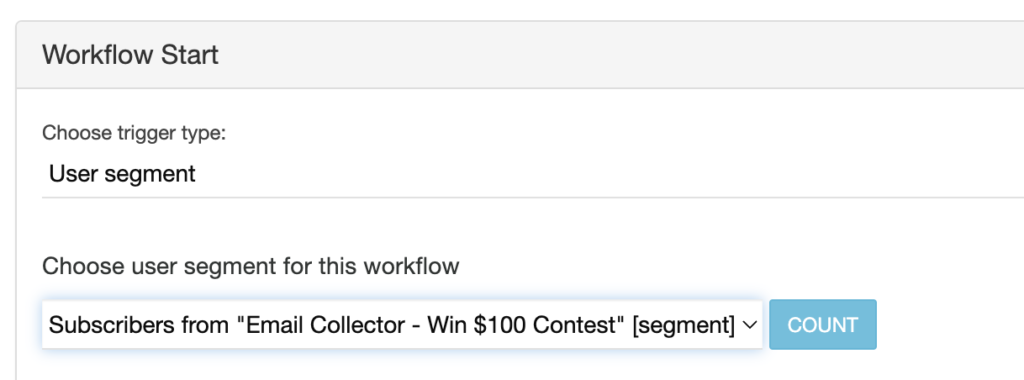
Cart or site abandonment are common behaviours ripe for retargeting. By using a Digital Assistant, you’ll be able to glean data on what interests or motivates each shopper who visits your site.
Each customer pain point can be set for a retargeting email to help continue the customer journey. If a customer is known to be looking for a deal but leaves the site, you can send a triggered email offering a small discount.
Best practices
To succeed at anything, you need to learn from those who’ve gone before them. Email retargeting has been around for a while now. Let’s check out some email retargeting best practices.
Properly segment emails
There’s no point in sending out remarketing emails if you don’t have well-defined and specified groups. In other words, you need to segment your audience based on demographics and behaviours that make sense.
You can use just about any criteria to segment your email recipients. Age, gender, geographic region, and other demographic data are easy places to start.
Digital Assistant can help you quickly gather this information and much more, such as what types of products and services each customer is interested in.
Segmentation will work better the more you can narrow down each segment and this comes into play with classifying certain types of behaviours. Instead of starting at the end, look at what information you have.
Ask yourself, how can this data help me differentiate between retargeting groups? For example, a shopper abandons a cart when they get to the shipping page.
You can send an automatic email offering free shipping or highlighting a same-day delivery option. If someone isn’t opening email newsletters, then it’s likely they need an incentive to re-ignite their interest via the way of an email with “Free X” in the subject line.
Be fast
Email remarketing is all about getting the right person at the right time. When it comes to finding the right time, sooner is better than later. When using specific visitor actions to trigger retargeting emails, an hour or less is a good general rule.
In this way, if a visitor leaves your site or even worse, abandons a cart at checkout, you can contact them with a personalised email before they have any time to forget. Follow up as soon as possible to bring your brand back to mind. This will help consumers to reconsider your products and services.
You can outline benefits, resolve buyer concerns, and even offer a discount or free shipping if necessary.
Be personal and specific
To be successful at retargeting, you must tailor your campaigns to each audience segment. Use an email marketing platform that allows you to track these groups individually and tailor your remarketing campaigns to each group.
The first thing you should do is exclude active subscribers from your email remarketing campaigns. This will save you money and prevent sending irrelevant emails to your active customers that may annoy and waste time.
Along with personalisation based on customer information, behaviour-triggered emails need to offer something virtually tactile.
A specific product or clear offer with a big “buy now” button must be part of any triggered email campaign. Depending on what action is taken, the recipient can be nudged further along the funnel or shifted to a different retargeting track.
Automate
Automation with data collection will streamline audience segmentation.
Use email platforms with automatic triggers to ensure emails are sent quickly and when most effective. Use email marketing automation to trigger new retargeting, lead generation, and conversion email sequences as needed.
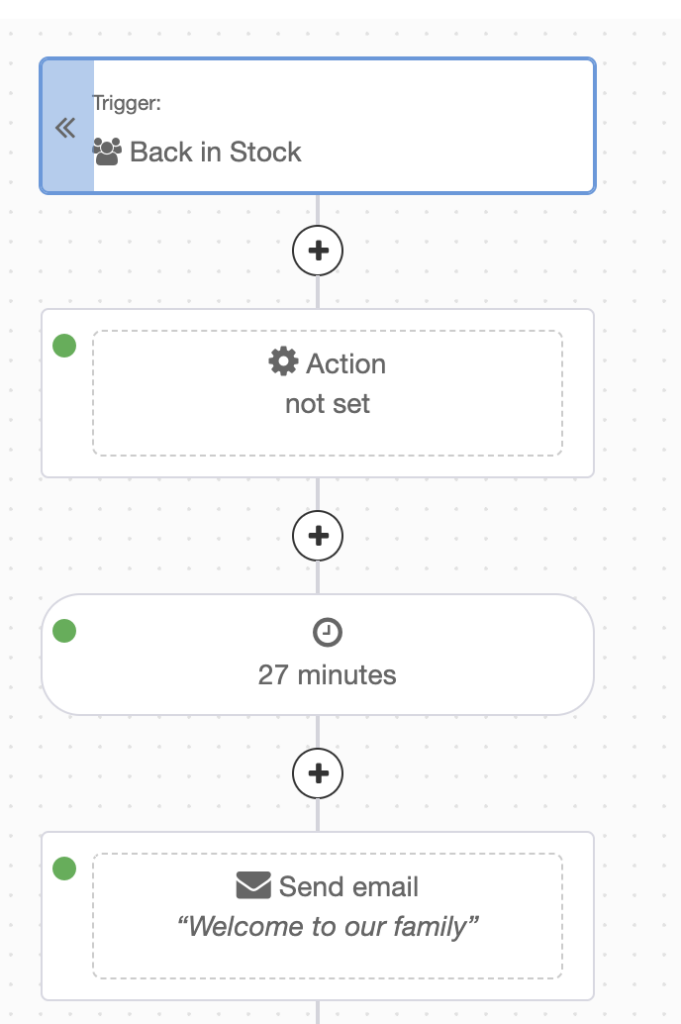
Use tools like digital shopping assistants and email marketing platforms to automate customer database building. And if you use a customer relationship management (CRM) platform, it will be easier to build, manage, and improve your retargeting campaigns.
Once set up, an effective email remarketing campaign will run like a well-oiled machine. By using the right tools, your team will be able to gain insights and evolve campaigns to their peak effectiveness.
How can we help you succeed in email retargeting?
At Ve, it’s all about making the shopping experience as seamless and enjoyable as possible for your customers.
We help you guide customers through the shopping process and find exactly what they’re looking for by eliminating the obstacles common in ecommerce.
Email Remarketing solutions can help any ecommerce business recoup customer value.
Basket abandonment email
Remind customers about products from an abandoned cart and recapture lost sales. These emails are sent as soon as possible to help keep your brand in mind with each customer.
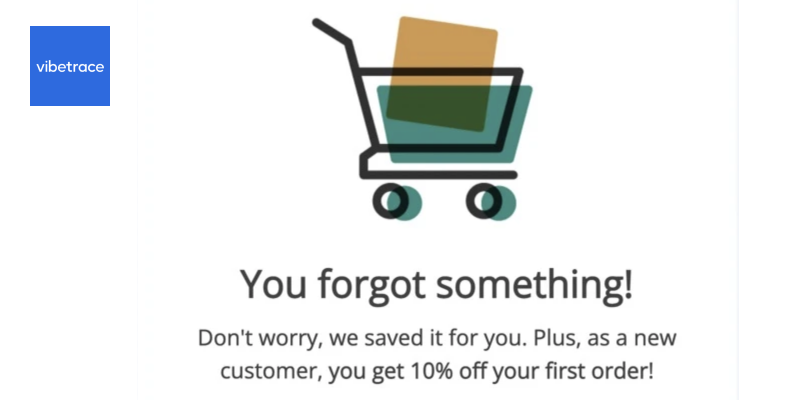
You can also connect a remarketing email to a list of previously abandoned products. This effectively automates a type of customer segmentation based on the items they add to their shopping carts.
Browse abandonment email
Like cart abandoners, but with an important difference. You have the email address, but you haven’t yet enticed a customer to go beyond browsing.
It’s now time to remind customers about products they have previously viewed and encourage them to purchase with the tactic of your choice.
Product cross-sell email
Promote and sell products related to the item a customer has already purchased. Give your customers personalised suggestions of items they’re likely to want or that complement their previous order.
Repeat purchase email
Remind customers about products they’ve previously purchased or provide product updates. Encourage them to buy again.
Customers will appreciate a gentle reminder that also helps them from running out of a range of items, from daily face wash to home spa filter cartridges or guitar strings. It’s a win-win situation!
Conclusion
Any ecommerce business should implement some form of email retargeting. Follow the best practices we’ve laid out and employ the right tools for the job.
While setting up your retargeting campaigns can take an investment of time and money, when done correctly, your email remarketing will be a customer winning machine.
Frequently asked questions (FAQs)
What does email retargeting mean?
Email retargeting is when a business remarkets ads and emails based on previous customer interactions with an ecommerce website. The customers’ data and actions trigger the specific types of remarketing that take place.
How do you do email retargeting?
Email retargeting requires the following steps: 1) Collect user data, 2) Audience segmentation, 3) Develop and plan campaigns 4) Retarget with specific and triggered campaigns. Use solutions like Ve to make gathering data gathering and retargeting emails easy and effective.
When should you use email retargeting?
Email retargeting can be used for a variety of purposes like following up a website browser or cart abandoner. It can also be used for subscribers with low open and click-through rates, or other forms of waning user activity. In most instances, it should be done rapidly in response to user action or lack thereof.

